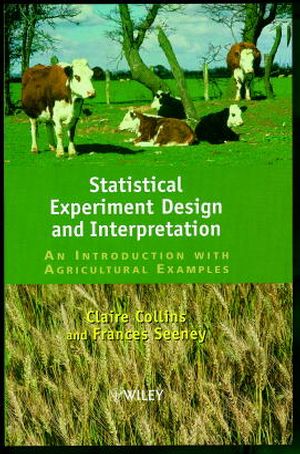Statistical Experiment Design and Interpretation: An Introduction with Agricultural ExamplesISBN: 978-0-471-96006-5
Hardcover
288 pages
August 1999
 This is a Print-on-Demand title. It will be printed specifically to fill your order. Please allow an additional 10-15 days delivery time. The book is not returnable.
|
||||||
Clearly written and free of statistical jargon, this invaluableguide concentrates on the practicalities of statistical analysisfor anyone involved with agricultural research.
Each section starts with the key points, giving a quick referenceto the contents and plenty of examples using 'real' data.
Successful experiment design starts with a statement of aims. Theauthors guide the reader through planning an experiment, includingdefining objectives, considering treatments, measurements ofinterest and the time and timing of assessments. Advantages anddisadvantages of different experiment designs and the importance ofdata exploration and graphical presentation are covered, as aredata collection, storage, validation and verification. Statisticaltechniques include the t-test, anlaysis of variance, basicregression analysis and non-parametric techniques. Assumptionsinherent to these techniques are clearly identified (bearing inmind the principles and aims) without losing the reader instatistical theory. All of the techniques are illustrated withworked examples and give full interpretation of the results.Formulae are kept to a minimum in the main text, but are given infull in the appendix.
Each section starts with the key points, giving a quick referenceto the contents and plenty of examples using 'real' data.
Successful experiment design starts with a statement of aims. Theauthors guide the reader through planning an experiment, includingdefining objectives, considering treatments, measurements ofinterest and the time and timing of assessments. Advantages anddisadvantages of different experiment designs and the importance ofdata exploration and graphical presentation are covered, as aredata collection, storage, validation and verification. Statisticaltechniques include the t-test, anlaysis of variance, basicregression analysis and non-parametric techniques. Assumptionsinherent to these techniques are clearly identified (bearing inmind the principles and aims) without losing the reader instatistical theory. All of the techniques are illustrated withworked examples and give full interpretation of the results.Formulae are kept to a minimum in the main text, but are given infull in the appendix.



